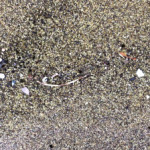The Great Pacific Garbage Patch made news this week, based on statements from Oregon State University professor Dr. Angelique White. As you may know, this is my research area, so I explained what’s going on over at the SEAPLEX blog.
Ever since SEAPLEX was funded around two years ago, I have begun every one of my general audience talks (and even a few scientific ones) with a display of misleading and confusing headlines on the accumulation of trash in the North Pacific. According to these headlines, it’s twice the size of America, 3.5 billion …something…(they don’t say what), stretching from Hawaii to Japan. Most of these claims cannot be supported by any scientific data of which I’m aware.
As a scientist, it can be pretty frustrating to see these misconceptions repeated and repeated for years on end. That’s why the SEAPLEX team has done our best to accurately relay our observations from our own voyage to the North Pacific Central Gyre, and to refer people to reliable sources such as the NOAA Marine Debris Program’s FAQ. But I suspect the persistence of these misconceptions is why Oregon State University oceanographer Angelique White stated in a press release last week that the Great Pacific Garbage Patch is “grossly exaggerated.”
Since that press release and the ensuing media coverage, I’ve received many requests for clarification. If there’s no garbage patch, what the heck were we measuring back in 2009? But actually there’s no conflict between Dr. White’s statements and SEAPLEX findings. In this blog post, I’ll explain a few of the key points from the OSU press release.
Read the rest here!





